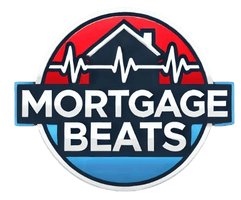The Basics of Adjustable Rate Mortgages
Adjustable Rate Mortgages (ARMs) offer an alternative to traditional fixed-rate loans, typically featuring lower initial interest rates that adjust periodically over the loan’s life. These loans follow a predetermined schedule, starting with a fixed-rate period (often 3, 5, 7, or 10 years) before transitioning to adjustable rates tied to financial indexes. While the initial savings can be substantial, borrowers need to understand how their rates can change to avoid payment shock down the road.
The adjustment mechanism in ARMs consists of three key components: the index that tracks broader interest rate trends, the margin that represents the lender’s markup, and the rate caps that limit how much the interest can change. These elements work together to determine your actual interest rate at each adjustment period. When selected carefully and understood fully, ARMs can be powerful financial tools, especially for buyers who plan to sell or refinance before the fixed-rate period ends.
At NorCal Real Estate & Financial Service, we help clients evaluate whether an ARM makes sense for their financial situation and homeownership timeline. Our advisors explain the nuances of different ARM products so borrowers can make informed decisions about this important financial commitment.
What Are Rate Caps and Why Do They Matter?
Rate caps serve as built-in consumer protections within adjustable rate mortgages, limiting how much your interest rate can increase during adjustment periods. These contractual safeguards come in three distinct forms that work together to prevent drastic payment spikes that could strain household budgets. Without these caps, borrowers would face unlimited exposure to interest rate volatility in the financial markets.
The importance of rate caps became particularly evident during periods of rapid interest rate increases, when they prevented many homeowners from experiencing unaffordable payment shocks. They essentially create a predictable worst-case scenario that borrowers can plan for when initially selecting their mortgage. Understanding these caps is crucial because they directly impact your long-term financial planning and ability to maintain homeownership through various economic cycles.
NorCal Real Estate & Financial Service emphasizes rate cap education as part of our comprehensive mortgage counseling. We ensure clients don’t just focus on the attractive initial rate but fully grasp how their payments could change over time within the confines of their loan’s specific cap structure.
The Three Types of ARM Rate Caps Explained
Every ARM features three distinct cap types that work together to control rate adjustments. The initial adjustment cap limits how much the rate can increase after the fixed-rate period ends, typically ranging from 2% to 5%. This first adjustment is often the largest single increase allowed under the loan terms. Following this, periodic adjustment caps control how much the rate can change in subsequent adjustment periods, usually ranging from 1% to 2%.
The lifetime cap represents the absolute maximum rate increase allowed over the entire loan term, commonly 5% to 6% above the initial rate. These three caps create a system of checks and balances that prevent runaway interest costs while still allowing the rate to reflect market conditions. A typical 5/1 ARM might have caps structured as 2/2/5, meaning a maximum 2% initial increase, 2% periodic increases, and 5% lifetime limit.
NorCal Real Estate & Financial Service helps borrowers interpret these cap structures in the context of current and projected economic conditions. We analyze how different cap combinations could play out under various interest rate scenarios to help clients select mortgages aligned with their risk tolerance and financial plans.
How Initial Caps Protect Early in Your Loan Term
The initial adjustment cap provides critical protection during the first rate change after the fixed-period ends, when borrowers are often most vulnerable to payment shock. This cap typically allows for a larger single adjustment than subsequent changes, recognizing that rates may have moved significantly during the initial fixed period. For example, a 5/1 ARM with a 2% initial cap might adjust from 3% to no more than 5% at the first change.
This initial cap is particularly important because it represents the first test of the borrower’s ability to handle higher payments. A well-structured initial cap prevents the rate from jumping to market levels all at once, instead phasing in increases over several adjustment periods. Borrowers should pay special attention to this cap when comparing ARM products, as it significantly influences the loan’s risk profile.
NorCal Real Estate & Financial Service carefully evaluates initial caps when recommending ARM products to clients. We consider factors like how long the client plans to stay in the home and their capacity to absorb payment increases when determining which initial cap structure makes the most sense for their situation.
Periodic Adjustment Caps: Your Ongoing Protection
After the initial adjustment, periodic caps continue to protect borrowers by limiting how much the interest rate can change during each subsequent adjustment period. These caps, typically ranging from 1% to 2%, prevent dramatic single-year payment increases even if market rates spike significantly. They effectively smooth out rate changes over time, giving borrowers more predictable payment trajectories.
The frequency of these periodic adjustments depends on the ARM’s structure – a 5/1 ARM adjusts annually after the first five years, while a 3/1 ARM would adjust yearly after three years. Regardless of frequency, the periodic cap ensures no single adjustment can exceed its limit. This creates a measured pace of change that allows household incomes time to potentially grow alongside mortgage payments.
NorCal Real Estate & Financial Service helps clients understand how these periodic caps interact with their financial planning horizons. We model various adjustment scenarios to demonstrate how payments might evolve under different economic conditions, empowering borrowers to make confident ARM selections.
Lifetime Caps: The Ultimate Safety Net
The lifetime cap represents the absolute ceiling on how high an ARM’s interest rate can climb, regardless of what happens in the broader economy. Typically set 5% to 6% above the initial rate, this cap provides the final layer of protection against runaway interest costs. For example, a loan starting at 3% with a 5% lifetime cap could never exceed 8%, even if market rates soar much higher.
This ultimate limit gives borrowers peace of mind that their interest costs won’t spiral out of control over the decades. It’s particularly valuable for homeowners who end up keeping their ARMs longer than originally planned. The lifetime cap essentially defines the worst-case interest rate scenario, allowing borrowers to evaluate whether they could handle those maximum payments before committing to the loan.
NorCal Real Estate & Financial Service emphasizes lifetime caps in our client education, ensuring borrowers fully understand their loan’s maximum cost potential. We help clients stress-test their budgets against lifetime cap scenarios to confirm their mortgage choice aligns with long-term financial goals.
How Rate Caps Interact With Indexes and Margins
Rate caps don’t operate in isolation but work in concert with the ARM’s index and margin to determine actual rate adjustments. The index (commonly the SOFR or Treasury rates) reflects current market conditions, while the margin (a fixed percentage set by the lender) represents the lender’s markup. Caps limit how much the sum of these two components can increase from one adjustment period to the next.
For example, if an ARM’s index has risen 3% since the last adjustment but the periodic cap is 2%, the rate would only increase by 2%. The uncapped increase would only come into play if future adjustments have remaining room under the caps. This interaction creates a complex but predictable system where rates can’t skyrocket overnight but will gradually reflect sustained market increases over time.
NorCal Real Estate & Financial Service demystifies these technical aspects for borrowers. We explain how specific indexes have behaved historically and how different margin amounts affect long-term costs, helping clients select ARMs with favorable index-margin combinations.
Calculating Your Worst-Case Scenario Payment
Understanding your ARM’s worst-case payment scenario is essential for responsible borrowing.
Borrowers should also consider the cumulative effect of periodic caps. Even if the lifetime cap isn’t reached, several years of maximum periodic increases could create significant payment strain. Calculating these intermediate steps helps borrowers prepare for the most likely adjustment paths rather than just the absolute worst case.
NorCal Real Estate & Financial Service provides detailed payment projection tools that model various adjustment scenarios. Our advisors help clients interpret these projections in the context of their income growth potential and overall financial picture to ensure comfortable long-term affordability.
Choosing the Right ARM Structure for Your Needs
Selecting the optimal ARM requires balancing the initial rate savings against the loan’s adjustment risks. Borrowers planning to sell or refinance within the fixed-rate period might prioritize lower initial caps to maximize early savings, while those likely to keep the loan longer may favor tighter periodic and lifetime caps for greater long-term protection.
The ideal structure also depends on current interest rate trends. In a rising rate environment, stronger caps become more valuable, while in stable or falling rate periods, borrowers might accept looser caps in exchange for better initial terms. The fixed-rate period length (5, 7, or 10 years) should align with the borrower’s expected time in the home.
NorCal Real Estate & Financial Service takes a personalized approach to ARM selection. We evaluate each client’s financial flexibility, risk tolerance, and homeownership plans to recommend cap structures that provide appropriate protection without sacrificing the ARM’s interest-saving potential.
How NorCal Real Estate & Financial Service Guides ARM Decisions
Our mortgage experts bring deep knowledge of ARM products and rate cap structures to every client consultation. We maintain relationships with lenders offering a wide variety of ARM terms, allowing us to match borrowers with loans featuring cap structures that align with their unique circumstances.
Beyond product selection, we provide ongoing support throughout the life of the loan. As adjustment periods approach, we help clients evaluate whether to refinance or continue with their ARM based on current rate environments and their evolving financial situation. This end-to-end guidance ensures clients never face unexpected payment surprises.
With NorCal Real Estate & Financial Service, borrowers gain confidence in their ARM decisions. Our proactive approach to rate cap education and long-term planning transforms ARMs from risky propositions into strategic financial tools tailored to each client’s homeownership journey.
Conclusion
ARM rate caps serve as essential safeguards that make adjustable rate mortgages viable options for many homebuyers. By understanding and strategically selecting cap structures, borrowers can access lower initial rates while maintaining predictable payment boundaries. These built-in protections have evolved through decades of mortgage lending experience to balance risk and opportunity.
NorCal Real Estate & Financial Service specializes in helping clients navigate the ARM landscape with confidence. Our comprehensive approach ensures borrowers fully grasp how rate caps work and how they’ll impact both short-term budgets and long-term financial plans.
If you’re considering an ARM or facing an upcoming rate adjustment, contact NorCal Real Estate & Financial Service today. Let our experts analyze your current terms, evaluate market conditions, and help you make informed decisions about your home financing strategy. With proper guidance, ARMs can be powerful tools rather than sources of uncertainty in your homeownership journey.
Ready To Get The Best Financial Advise, Email us at: Chris@mortgagebeats.com



